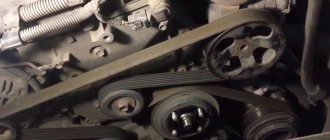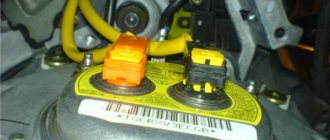Specifications Reviews
Toyota Land Cruiser Prado 90 is the second generation of the series, which has become legendary. It was here that the Japanese were able to achieve maximum comfort coupled with maximum cross-country ability. This attracted a large number of buyers, some even bought it instead of its main competitor - Pajero.
Story
The SUV was first released in 1996. He moved to independent suspension, which, together with an active advertising campaign and correct positioning, bore fruit. Two body versions immediately appeared - a 5-door and a 3-door, differing in the length of the wheelbase.
In 1999, the Japanese modified the car, making it safer, and a year later they installed a new diesel engine. The success was actually less than what the manufacturer wanted. Many are sure that the reason is the small range of engines.
In 2002, the car was discontinued, replaced by the J120. For Venezuela, the car was produced until 2009 under a different name.
Pradika body
The appearance of the SUV has moved away from straight shapes towards rounded details. However, it still depends on the body type and country, for example, the 3-door version could sport round headlights instead of large rectangular ones. By the way, now owners are often faced with rotting taillight wiring.
Most of the body parts are made of high-strength sheet metal coated with anti-corrosion protection. The bottom is especially protected by a thick layer of polyvinyl chloride. The Japanese made powerful bumpers from durable recycled material. Optionally, it was protected with a metal “kenguryatnik”; additional thresholds were also installed.
After so many years, rust is actively overtaking the body. You can find corrosion everywhere, but most owners love this car for its legendary status, so they take care of it. If you see serious traces of corrosion, it means that the body of the ninetieth Prado was not looked after or was restored after an accident with Chinese spare parts.
Another problem with the body is the rear door, on which the spare wheel is mounted. The weight of the spare tire wears out the hinges, so the door begins to sag. Otherwise, Toyota has created a truly durable body that lasts a long time even with active off-road driving.
Dimensions of the 5-door SUV:
- length – 4675 mm;
- width – 1820 mm;
- height – 1880 mm;
- wheelbase – 2675 mm;
- ground clearance - 230 mm.
Dimensions of 3-door:
- length – 4330 mm;
- width – 1820 mm;
- height – 1870 mm;
- wheelbase – 2365 mm;
- ground clearance - 230 mm.
Repair and service
Most owners agree that the car does not require special maintenance. Once every 2-3 years you have to change the ball and silent blocks, but other than that there are no problems inherent to all TLCs without exception. In winter, it is recommended to monitor the car more closely: unfavorable weather conditions lead to faster wear and tear of the car.
Reviews differ regarding repairs. Some say that original spare parts from dealers cost a lot, so if a car breaks down, you have to spend large sums on restoring it. Others order parts directly from Japan or China and believe that the cost of self-service is much lower than going to a service station.
Interior
The car's equipment can compete with some modern models. The car was well equipped; the basic versions already included air conditioning and a pair of airbags. It’s rare to find top-end TZ/RZ trim levels loaded with additional options.
The so-called “full stuffing” Land Cruiser Prado 90 boasted leather upholstery, heated front seats, electric seat adjustments, climate control (Japanese version), cruise control and even navigation. Often rear passengers are equipped with separate climate systems, apparently the standard one is not enough.
This is a 5-seater car, but two rear booster seats were offered that fold towards the windows. Thus, you can either increase the trunk or take two more people with you. Regarding the trunk, it is 740 liters, and the rear sofa folded gives 1150 liters. By the way, the interior is transformed in different ways. The 3-door SUV has 450 liters, and 840 liters when unfolded.
The off-road affiliation is emphasized by the center console display, which displays:
- compass;
- barometer;
- altimeter;
- vehicle tilt level;
- temperature outside.
Salon
The SUV has a spacious, comfortable interior. Thanks to the high seating position, the driver has impressive visibility. Many details, for example, wooden inserts on the dashboard, give the car solidity.
The central panel looks interesting: there is a trio consisting of a clinometer, a central multi-function measuring instrument (it combines a barometer, thermometer, timer, altimeter, etc.) and a compass.
Climate control, headlight washers, electric windows, heated and electric mirrors, a leather-wrapped steering wheel (with an adjustable steering column), many niches and cup holders in the cabin - everything for comfort.
If equipped with three rows of seats, the last seats fold down. You can fold them both vertically and horizontally, and if you also remove the second row, the result is no worse than an uncompromising cargo van.
Engine characteristics
| Type | Volume | Power | Torque | Overclocking | Maximum speed | Number of cylinders |
| Petrol | 2.7 l | 150 hp | 240 H*m | 11.9 sec. | 165 km/h | 4 |
| Petrol | 3.4 l | 178 hp | 303 H*m | 10.4 sec. | 180 km/h | V6 |
| Diesel | 3.0 l | 125 hp | 295 H*m | 14 sec. | 160 km/h | 4 |
| Diesel | 3.0 l | 163 hp | 343 H*m | 12.5 sec. | 165 km/h | 4 |
Read more
In fact, the range of engines is extensive if you collect all their versions from different countries. Most people know three motors:
- 3ZR-FE - 2.7-liter 4-cylinder gasoline engine with chain drive. The engine produces 150 horsepower at 4800 rpm and 240 H*m of torque, available from 4000 rpm. Power is not enough for a 1.7 ton car.
- 5VZ-FE – lightweight petrol V6 with a modified cylinder head. Power is increased to 178 forces and 303 H*m torque. With it, the car drives better, but you have to put up with high consumption, easily reaching 20 liters.
- 1KZ-TE is a 3-liter diesel engine of the Toyota Land Cruiser Prado, which has proven itself well in its predecessor. The engineers eliminated all the “jambs”, raising the power to 125 forces from 295 H*m of torque. In 2000, it was replaced by a technically similar design 1KD-FTV, producing 163 power and 343 H*m from the same volume.
These are reliable motors with minor age-related sores. There is an eternal chain here, and everything else is subject to natural wear and tear. Spare parts are now cheap, although it all depends on the region of residence. Distant regions are not familiar with the engine, which is why maintenance will be expensive, plus you will have to look for specialists.
Until 1998, the 3.4-liter engine had a weak fastening of the crankshaft pulley bolt; it provokes beating, which can break part of the crankshaft. Analyze this unit on models produced before 1998 carefully, because you may end up having to replace the crankshaft.
Pipe diesel has a long life, but it is better to let the turbine cool after stopping, or somehow install a turbo timer. If you ignore this, the bearings will gradually wear out and the oil will begin to run.
Advantages and disadvantages
Like any car, the TLC has pros and cons:
| Advantages | Flaws |
| Capacity | Weak silent blocks |
| Reliability | Torpedo vibration |
| Independent of temperatures: starts even in cold weather | Low motor power |
| Unpretentiousness to fuel quality | Poor location of the air intake - the air is not cooled properly |
| Good review | Weak lower ball joint |
| Excellent control | High fuel consumption |
| High cross-country ability | Valency |
The main disadvantage of this car is considered to be its age: the 90th Kruzak has already celebrated its 20th anniversary, and time does not spare anyone. With careful care, corrosion, wear of parts and other defects can be avoided.
Passable transmission Prado 90
The SUV was all-wheel drive; the base was equipped with a simple Part Time system with a rigidly connected front axle. Much more common are cars with a Full-Time system, equipped with a two-stage transfer case, to which a manually locked center differential is screwed.
The rear axle received a limited slip differential or a locked differential. Russian models received automatic or forced blocking of the center diff. Serious off-road conditions greatly stretch the transfer case chain, which is verified by a cracking sound during a sharp start. With age, worn out oil seals require attention.
The engines were offered with either a 5-speed manual or a 4-speed automatic. The automatic transmission of the ninetieth Pradika is of course comfortable, but performs worse off-road. For longer service life, Toyota recommends changing oils in all transmission elements every 30 thousand kilometers.
Options
All trim levels are equipped with a permanent all-wheel drive system. It includes several operating modes:
- H – all-wheel drive mode, where the center differential operates freely. Suitable for standard driving conditions.
- By selecting HL mode, you can lock the center differential for slippery and wet roads.
- N mode is suitable for more severe conditions.
- Difficult driving conditions and off-road - LL mode in full arsenal - already with a working reduction gear and a locked center differential.
A variety of options were offered in the equipment list. It is worth noting:
- Active Traction Control (or TRC) – electronic traction control assistant;
- VSC - vehicle stability control system;
- automatic transmission for almost all trim levels.
Locking rear and center differentials is also available for everyone.
Independent suspension
The suspension is breakthrough, because the front uses an independent design with double wishbones and torsion bars. At the rear they left a continuous axle with torque rods and anti-roll bars. Cars with adjustable shock absorbers are rare.
Until 1997, the suspension travel was short, which is why a loaded car immediately wore out the rubber stops. The manufacturer solved the problem. The suspension is comfortable, rides over bumps smoothly, and behaves well off-road. Check the ball joints periodically; they wear out without giving any signals.
The brake system is ventilated disc at the front and drums at the rear. ABS, ESP, BAS, TCS systems help. The steering of the Pradika periodically knocks and leaks. If there are leaks, the power steering will have to be changed, the rack will be repaired.
Sores
An old car is characterized by an extensive list of technical faults, but the Prado does not have such a long list. Let's note some design features:
- In versions for Japan and the Middle East, the characteristics of the “native” thermostat are not suitable for the Russian, colder climate. Solved by replacement.
- In these same versions, increased wear of parts of the main cylinder block (crankshaft and timing gear) is observed.
- At high mileage, engine crankcases, rear axle gearboxes and transfer cases often leak due to clogged breathers.
- If your car has wide tires, you need to be prepared for increased wear on the front wheel bearings. This is more of an advice than a sore point.
- Once every 100 thousand - replace brake discs.
- Every 150 thousand mileage - inspect the steering rack and pump for fluid leaks.
- On older cars, the electrical wiring requires attention in some places. In particular, the taillight wires rot.
- The body may show age-related corrosion. Main places: on the gutters of the rear windows, the paint on the upper frame of the windshield is swelling, the wheel arches are rusting. But all this can be avoided by localizing the outbreak in time. Specimens in quite good external condition have survived to this day.
- The rear fifth door is sagging. Especially with a spare tire attached to it. Treated by replacing door hinges. But not for long.
Read also: How to change the battery in a Vesta key
As we see, almost all sores are of age-related origin. Prado does not “crumble” in all components and assemblies and, with timely care, will last a long time.
Price
There are few living specimens left on the market, which makes the search difficult because you may have to buy what you have. The car is expensive for its age, the price does not decrease due to its legendary status and reliability. You can buy it for 500-850 thousand rubles , it’s expensive, but you definitely won’t regret buying this Japanese.
Who is it suitable for? For people who love active recreation, who want a passable car, or something ready for serious off-road use. The Toyota Land Cruiser Prado J90 will live for a long time; reliability is not an issue here.
Owner reviews
According to reviews from owners, the Prado 90 is inferior in terms of power to its younger and older brothers. This is stated with confidence by those who switched from the same TLC 100 to the short one. I was pleased with the braking system: it is sufficient to work effectively with the dimensions of the car.
The anti-corrosion coating and high-quality material justify their purpose. A pleasant moment for owners was the ability of the SUV to maintain its appearance without chipping paint or rusty spots. However, no matter how durable the body of the short Land Cruiser is, most owners do not like it because it looks like a stump.
The interior is spacious, but the driver's seat is confusing. Tall people do not always find it comfortable to fit into a chair.
A plus is the ability to increase trunk volume, even though you will have to sacrifice rear seat space. The dashboard contains comprehensive information. The salon is designed in a restrained style without unnecessary details.
The car is suitable for use in urban environments and light off-road driving. The SUV is not capricious, and owners do not have any difficulties maintaining it. The price corresponds to the quality.











